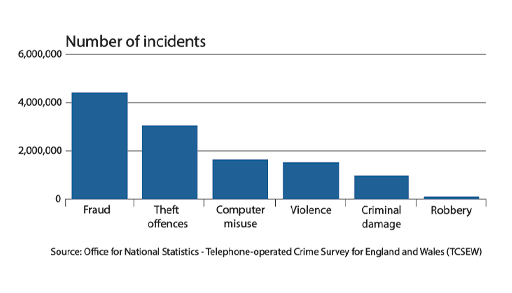1 Criminological perspectives of demand
One way of understanding demand for much policing activity comes through criminology – the scientific study of crime. At the simplest level, it is useful to know what types of crime occur and how frequently they are committed. For example, crime statistics in England and Wales show the following most commonly reported crimes:

Activity 1 Crime statistics
How do these crime statistics help plan policing capacity? What are their limits of how they help?
Discussion
The crime statistics can act as a guide to what crimes police deal with and the skill sets needed within forces to deal with those crimes. The statistics are also useful when observed over time as trends in crime types can be observed. Planning can then address how to reduce or prevent these crimes or look at increasing particular skill sets.
There are a number of limitations. First the statistics themselves can only be a guide as much crime is unreported. Secondly, up to 80% of police work is not crime-related (Boulton, L. et al., 2017) so when we look at decisions such as numbers of police needed we are missing most of the workload. Thirdly, it does not usually tell us when or where officers are needed.
The next section looks at an alternative way of understanding patterns in crime.
